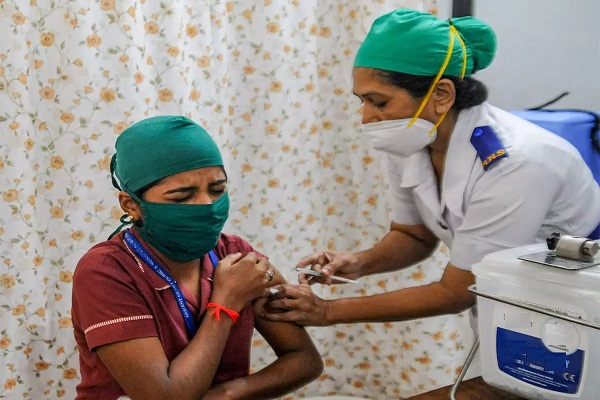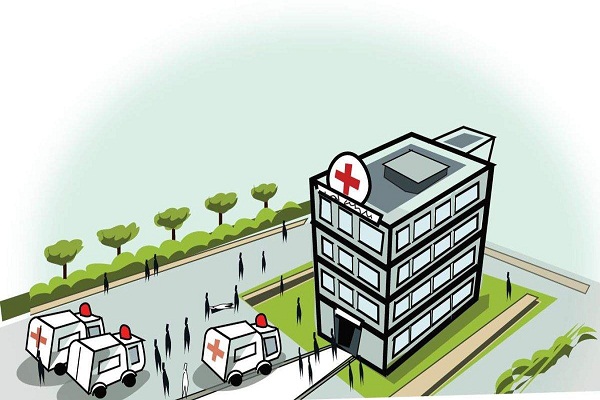
 The recent incidents of Ebola outbreak and related in Africa has been making headlines across the world. However, Dr. Seth Berkley, CEO of the GAVI Alliance often wonders as to why this disease is so deadly as compared to other deadly diseases present in the world.
The recent incidents of Ebola outbreak and related in Africa has been making headlines across the world. However, Dr. Seth Berkley, CEO of the GAVI Alliance often wonders as to why this disease is so deadly as compared to other deadly diseases present in the world.
He suggests it’s because people in the west have forgotten what it is like to deal with an untreatable disease.

It starts with familiar flu-like symptoms: a mild fever, headache, muscle and joint pains.
But within days this can quickly descend into something more exotic and frightening: vomiting and diarrhoea, followed by bleeding from the gums, the nose and gastrointestinal tract.
We have simply forgotten what it is like to live under threat of such infectious and deadly diseases, and forgotten what it means to fear them Death comes in the form of either organ failure or low blood pressure caused by the extreme loss of fluids. Such fear-inducing descriptions have been doing the rounds in the media lately.

However, this is not Ebola but rather Dengue Shock Syndrome, an extreme form of dengue fever, a mosquito-borne disease that struggles to make the news.
Ebola is without a doubt a truly horrible disease, but then there are many other bad ones that kill far more. So, why is it that Ebola is grabbing headlines and other deadly diseases are not?
Not the only one Boy with measles rash In the developed world, measles is seen as a mild condition – but it can kill
Is it because people in Africa are suddenly dying?
That seems unlikely. Dengue has a relatively low death rate, but it still kills up to 20,000 of the half a million people who are infected every year; that’s an order of magnitude more than the worst Ebola outbreak, and yet barely a fifth of the number killed by measles every year.
And when you start to look at pathogens like pneumococcal and rotavirus – causes of the two biggest childhood killers, pneumonia and diarrhoea – the number of deaths rapidly climbs up into the high hundreds of thousands.
It is true that Ebola is also highly infectious, which drives away health workers who may understandably fear a needle stick.
But then so many others are more infectious, like measles, through air-droplets, and hepatitis B, which is transmitted by similar means to HIV but 50 times more infectious.
Perhaps then it has something to do with the fact that there is no cure and that 50%-90% of people infected will inevitably die.
Why should we see deaths from diseases we have previously wiped out and for which we have safe and effective vaccinations?
Possibly, but then there is no cure for rabies either, and once someone develops symptoms they are almost 100% likely to die a slow and painful death, unless, that is, they have been vaccinated post-exposure.
The fact is while Ebola means a painful and isolated death, away from loved ones, there are other diseases that are horrific and equally deserving of both our fear and respect; diseases which, like Ebola, are still dreaded in West Africa and beyond, and which regularly kill hundreds of thousands of people throughout the world’s poorest countries.
However, in wealthy countries, thanks to the availability of modern medicines, many of these diseases can now usually be treated or cured, and thanks to vaccines they rarely have to be.
Because of this blessing we have simply forgotten what it is like to live under threat of such infectious and deadly diseases, and forgotten what it means to fear them.
So when an outbreak like this comes along, from the comfort of our relatively disease-free surroundings it is only natural to look on in horror and be terrified by the prospect of something like Ebola making its way to our shores.
But while Ebola remains a genuine concern in West Africa, if it ever did make it to Europe or North America the chances of it spreading far are remote.
This is for two important reasons: first our disease surveillance is more stringent, and second Ebola kills or immobilises its host before they have much of a chance to spread it. Boy being vaccinated Vaccination rates have fallen in some parts of the developed world
In reality, a bigger concern far closer to home is that some diseases which we once vanquished, like measles, rubella and pertussis, are now making a comeback.
Thanks to an insidious complacency we have seen significant drops in vaccination rates in many parts of the western world, to the extent that diseases are not only coming back but to levels where we are actually exporting them to poorer countries.
Be a part of Elets Collaborative Initiatives. Join Us for Upcoming Events and explore business opportunities. Like us on Facebook , connect with us on LinkedIn and follow us on Twitter , Instagram.












